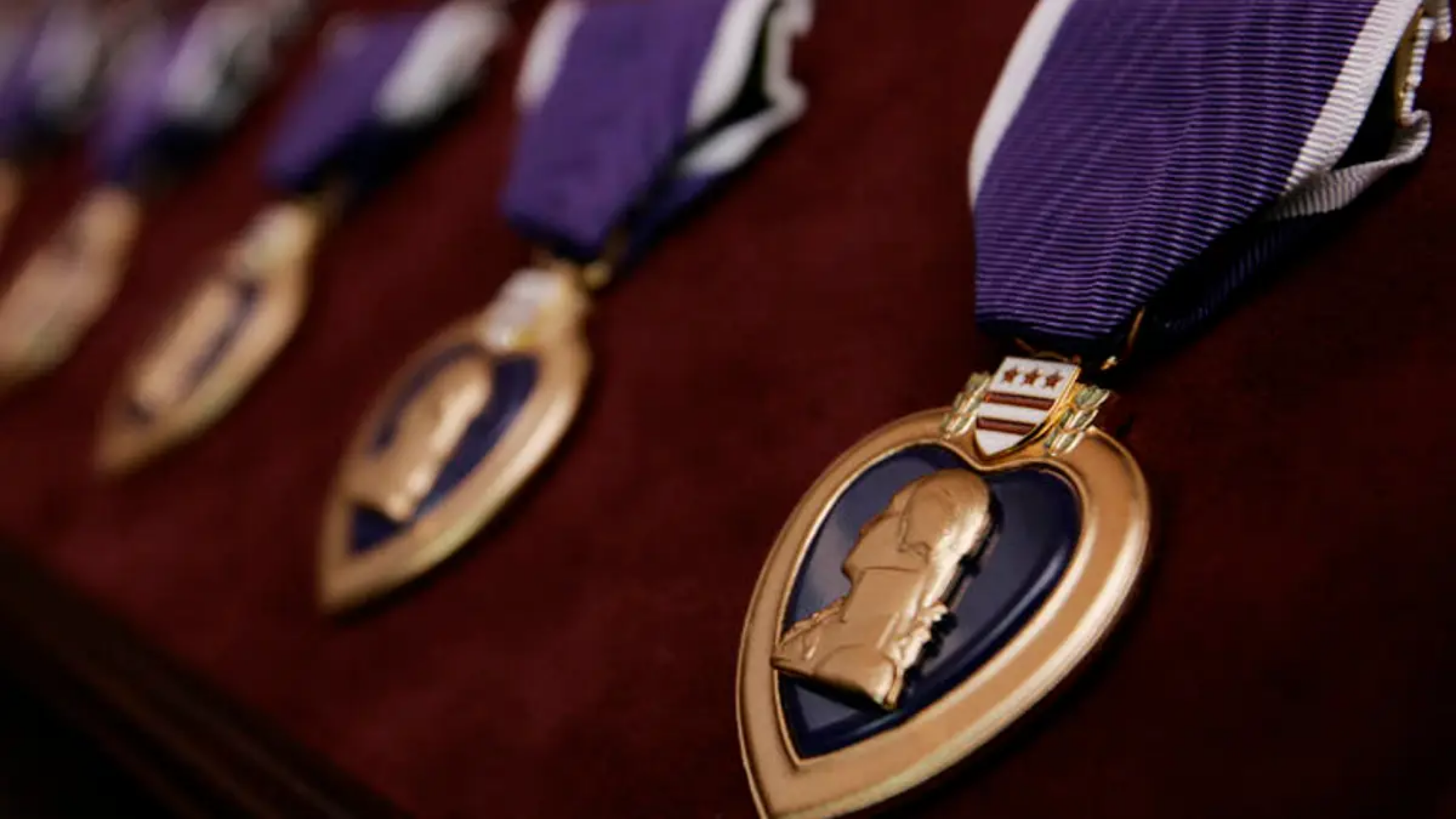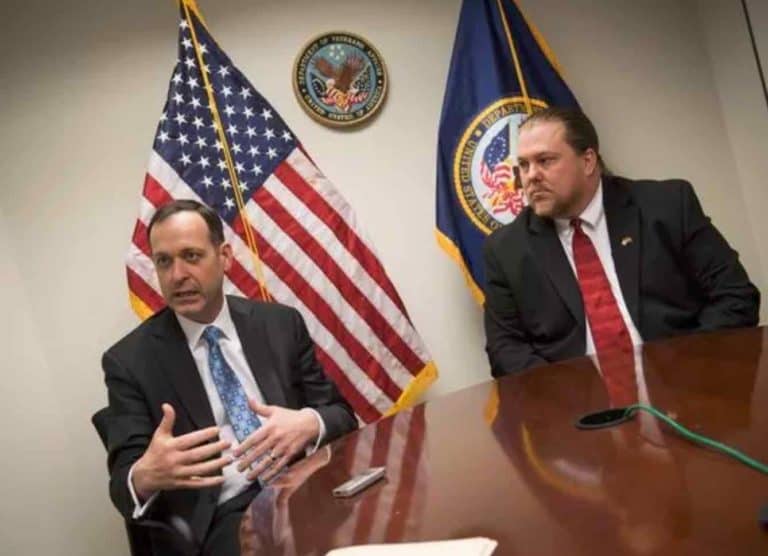Purple Hearts for PTSD? VA Expands Recognition for Invisible Injuries
For generations, the Purple Heart has symbolized wounds suffered in combat — a badge of honor worn by those who’ve bled for their country. But now, in a powerful shift, the Department of Veterans Affairs is taking a bold step to recognize wounds we can’t see.
The VA has officially launched a pilot program to honor veterans who suffer from combat-related Post-Traumatic Stress Disorder (PTSD) by treating their condition as deserving of the same acknowledgment as visible injuries.
And while this isn’t an official change to Department of Defense Purple Heart criteria — yet — it sends a loud, clear message: psychological injuries are just as real, valid, and worthy of honor as physical ones.
What’s Changing?
The pilot initiative, announced in late June 2025, is designed to identify and formally recognize PTSD that was:
- Caused directly by combat situations
- Diagnosed and linked to service during a specific deployment
- Previously overlooked or dismissed as a “non-visible” wound
Veterans who meet the criteria under this new framework will receive formal recognition from the VA, with additional outreach from care coordinators, eligibility for expanded mental health services, and ongoing evaluation for possible further honors.
While the program does not currently alter the criteria for the official Purple Heart award from the military, VA officials say they are exploring pathways for alignment between DoD and VA standards — with veterans’ organizations pushing hard for a unified approach.
“For too long, veterans with invisible wounds have suffered in silence. This is about validating their sacrifice.”
~ VA Mental Health Services Spokesperson, via Military Times
Source: Military Times – VA Launches PTSD Recognition Pilot
Why This Matters for Disabled Veterans
Many disabled veterans living with combat-related PTSD have:
- Been denied certain honors or recognition because their wounds weren’t “seen”
- Avoided seeking treatment out of stigma or fear
- Struggled to explain the depth of their trauma to a system that often only acknowledged physical harm
This new initiative is more than symbolic — it’s an institutional admission that mental health deserves equal footing in both treatment and recognition.
For those who have long felt invisible, this is a step toward being seen.
Who Qualifies (And What You Can Do)
To be eligible under the new pilot:
- Your PTSD must be linked to a specific combat event or deployment
- You must have a formal diagnosis from a VA clinician or other approved source
- You may be asked to provide documentation or attend an evaluation
If you believe you qualify:
- Contact your VA Mental Health Coordinator
- Request a review under the “PTSD Recognition Pilot”
- Work with your Veterans Service Officer (VSO) or advocate for application support
- Be open to follow-up — this is a new process, and it may evolve
Advocacy in Action
Veteran advocacy groups like Wounded Warrior Project and Veterans of Foreign Wars (VFW) are already rallying behind this initiative, calling it a “monumental step” toward destigmatizing mental health wounds.
There’s also growing pressure on the DoD to revisit the official Purple Heart eligibility rules, which currently only cover visible, physical injuries. If that changes, this VA pilot may be the first domino in a long-overdue shift.
A Step Toward Healing and Honor …
This pilot program may not change the ribbon on a veteran’s uniform — yet — but it changes something bigger: the way we acknowledge sacrifice.
To those still fighting battles in their minds every day, this is a long-awaited validation.
And to those wondering if their invisible wounds matter — they do. And they always have.
If you or a loved one is living with PTSD linked to combat, this may be your time to step forward and receive the recognition you’ve long deserved.
Need help navigating the process?
Contact your local VA rep or visit VA Mental Health Services to get started.





The moral injury is real. Something you walk around with for the rest of your life. Always trying to make amends.
Glad I mostly just read all this bullshit but don’t really care at the end of the day. Left VA in 2020 am never went back although crippled basically. Anything is better than dealing with those mentally ill derelicts who fuck people. I’ll probably die from this condition too. It’s a slow painful death too because degenerative disease.
I’m having difficulty understanding the validity of all of this. None of this is clear on what changes and what the benefit is if the DoD is maintaining their criteria, especially since the VA doesn’t issue Purple Hearts.
More importantly however, there’s no other supporting information on this anywhere else on the Internet. The link to Military Times is broken and when I reached out to the VA, they nor the National Center for PTSD have never heard of any of this. That’s very concerning and breaks trust with thinking this website is legit.
Rhett J Puder gave me bogus diagnosis based on trivial nonsense. End perception only based diagnosis. These people have mental health problems themselves. Shouldn’t be one on one, alone in the same room with veterans. Rhett Puder was a mentally ill son of a bitch.
terrible idea, purple heart inflation that will be abused by all the worthless eaters scoring 50%+ disability for office work and imaginary sexual assaults. In the past 15 years the pendulum has swung so far the other way (I had to fight tooth and nail for my disability percentages the past 20 years) that it has to stop.
This is abusing the system. Enough.
No way. I don’t approve. PTSD symptoms change, wane over time. Most veterans adapt and succeed in life.
Scars from bullet and shrapnel wounds never change or go away.
This is a step in the right direction. Toxic exposure should be considered for all military personnel not just the places mentioned. ASBESTOS should be included and considered as one of the worsts contributors to this exposure. Consider the places we were sent while defending our country. We never complain. I’m a patriot. JA Valdez jr.
The VHA is undergoing a decades long implosion. People are waking up to the fact that the US government is a failure and fraud, and a good portion of our systems in general are not bringing people a greater amount of well-being, rights, freedoms, or liberties. We must all play our part and bring these systems down so we can establish something better. In the case of VHA, that means UBI and Medicare for all veterans type program. We can’t let these people put food on their table using appeal to emotion, veterans sentiment, to continue to push a failed healthcare model and jobs program, redistribution apparatus under the guise of healthcare system, which it’s not. It’s a complete wreck and people die all the time because of this fraud.
Yeah that’s just gonna piss off VA employees who already look at vehicles like they have “personality issues” causing problems instead of PTSD.. the same employees who think benefits are too generous. This will only increase abuse as VA refuses to fire people when they identify them as being this way, having this mentality, engaging in this poor culture and attitude.
Oh God that’s a bridge too far. Just imagine the backlash to that one.😆 No wonder the country is so divided and government taking a monster shit. People just doing things regardless of what anyone else might think and you have this going in all directions.
Meanwhile the VA is so unjust and terrible that eventually veterans might seek help by the Iranian or Russians to get revenge on the depraved entity. Justice gap keeps getting wider and wider as the courts remain derelict!!
It’s about time to recognize PTSD. I would think that an award like the Purple Heart would be good, like a multicolored ribbon and the Purple Heart Medal with a white background would be good, representing the blankness of the mind.
While they are at it medal for Agent Orange and burn pits should get one too equal to a Purple Heart medal. Their suffering is equally as bad for the rest of their lives. Suggest that the ribbon be flame colors and the medal the same as a Purple Heart with the background be flame colors.
Cdr. Rick Wilson USN Retired.
That might help a lot of suffering…each service has thier own rules regarding the PH…getting those aligned would be a start.